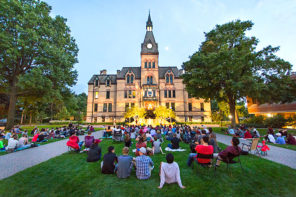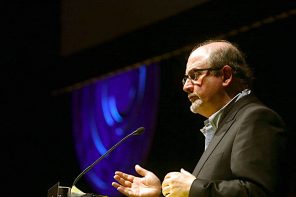And do not say of those who are slain in the way of the Divine, “They are dead.” Rather, they are alive: but you perceive [it] not. (Qur’an 2:154)
“The first time I’ve ever seen Egypt was in Tahrir. I’ve never seen Egypt before then.” (al-shaykh al-shaheed Emad Effat)
***
I didn’t think it was possible, but the revolution in Egypt just got more personal.
Last Friday night, ‘Emad Effat’ (also spelled ‘Imad Iffat’), unarmed, was shot and killed in Cairo, during clashes between anti-junta protestors and the military police. Though it has yet to be properly reported, his life, his death, and the reaction to it are testaments to and lessons from the beauty of the ongoing Egyptian revolution.
Many people of all kinds have died in the Egyptian revolution. This time, however, a shaykh of the Azhar (the preeminent Muslim institution of learning worldwide) and senior figure at the official state body of the Mufti of Egypt has been killed. But the reaction was still unexpected.
Among the Azhari shaykhs present in Tahrir Square in January and February, Shaykh Emad refused to see the protests as illegitimate rebellion against a ruler. On the contrary, he considered them a form of calling to good and forbidding the wrong—a Muslim’s duty, according to classical Islamic teachings.
A friend of mine was with him in Dar al-Ifta’ a few weeks ago when a caller asked about the legitimacy of firing upon protestors. His response and verdict (fatwa) was unequivocal and yet so characteristically calm and patient that it was forbidden under any circumstances. According to his family, Shaykh Emad was, for several days, at the sit-in outside the Cabinet building after finishing work, to stand in solidarity, when he was shot and killed.
There is no doubt that he was unarmed. Whoever pulled that trigger delivered Shaykh Emad as a martyr; for whoever is killed unlawfully is indeed a martyr, a true shaheed, according to the teachings of Islam. His own fatwa established his own martyrdom.
I did not know Shaykh Emad well. In fact, I knew him mostly by his face, which was always smiling and full of light, and which I saw many times at the Sultan Hassan mosque in Egypt, where his own teacher (the current Mufti of Egypt), often gave the sermon. Yet, despite our limited interaction, his killing touched me in a profound way.
I was not the only one. Within a few hours of the shooting, Twitter and Facebook were on fire with expressions of sadness and outrage, in a way I have never seen. The funeral of the shaykh al-thawra (the shaykh of the revolution) was even more heart-wrenching. Those in attendance were struggling to maintain their composure even within the prayer—their voices were breaking.
But in sadness, there was also beauty. Shaykh Emad was a deeply religious Muslim figure, and yet the outpouring of emotion online as well as the funeral and the funeral procession was not limited to the religious Muslim sector of society. As an Azhari, he was a product of the mainstream center of Islamic thought, which meant that among the mourners were a number of students to whom he exemplified a deeply religious scholar whose teachings were not limited to the mosque. But there were also liberals, secularists, socialists, Christians, priests, men, women, young, old, poor, rich—just like Tahrir Square in January, where Shaykh Emad said he saw Egypt for the first time.
After knowing Shaykh Emad’s death brought so many different people together, a friend prayed: “May God include that among his many good deeds.”
The death of Shaykh Emad has barely registered in the international media. Would it have been different had it been a Coptic monk that had been murdered? And yet, even in Egypt few seem to know of the killing, because the state media (the main source of information for most Egyptians) has virtually ignored it too. How could they credibly explain the death of an unarmed, nonviolent Muslim cleric in the midst of a conflict between protesters and the military (which was clearly using live ammunition) without pointing the finger of blame at someone? Best not to talk about it and hope no one will notice.
But the thousands that went to the Azhar Mosque in Cairo to pray at the funeral on Saturday—the thousands that filled the streets as they followed the funeral bier to the cemetery—they did notice. They will not forget. Nor will they forgive. Many within the Azhar establishment itself sent signals in the aftermath, indicating that perhaps, just perhaps, the Azhar is beginning to awake from its slumber, after having been put to sleep for so long during the Mubarak era. At a time when Egypt, but also the Muslim world, is in dire need of mainstream Islamic teachings to counteract extremism and serve as a resource for authentic moral and ethical values—well, perhaps its awakening might be the lasting legacy of Shaykh Emad.
A Malaysian friend wrote to me after she heard of the news, expressing her hope that Egypt would stand proud again. The only response I could give was: “Our pride is in the likes of people like Shaykh Emad Effat. His light is not extinguished; it only shines more brightly.”
Another friend reminded me of a class Shaykh Emad once gave on a text by Bayjuri, a medieval theologian. At the end, he said that we did not visit the resting places of the scholars and saints often enough, and that we should all make it a point to do so. For many there’s one more to visit.
As I finished this piece I turned again to the epigraph, a Qur’anic verse that speaks of the saints and martyrs, and thought:
“And do not say of the revolution that is slain in the way of the Divine, ‘The Egyptian revolution is dead.’ Nay! It lives! But you perceive it not.”




